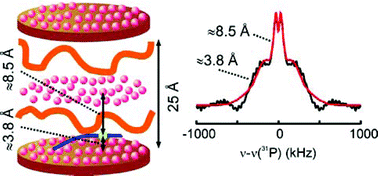A pulsed EPR study of surfactant layer structure in composites of a synthetic layered silicate with polystyrene and polycaprolactone
Abstract
Double electron electron resonance (

* Corresponding authors
a Max Planck Institute for Polymer Research, Postfach 3148, Mainz, Germany
b Max Planck Institute for Medical Research, Jahnstrasse 29, Heidelberg, Germany
c
University of Konstanz, Department of Chemistry, Universitätsstraße 10, Konstanz, Germany
E-mail:
Gunnar.Jeschke@uni-konstanz.de
Double electron electron resonance (

 Please wait while we load your content...
Something went wrong. Try again?
Please wait while we load your content...
Something went wrong. Try again?
Q. Mao, S. Schleidt, H. Zimmermann and G. Jeschke, Phys. Chem. Chem. Phys., 2008, 10, 1156 DOI: 10.1039/B713788E
To request permission to reproduce material from this article, please go to the Copyright Clearance Center request page.
If you are an author contributing to an RSC publication, you do not need to request permission provided correct acknowledgement is given.
If you are the author of this article, you do not need to request permission to reproduce figures and diagrams provided correct acknowledgement is given. If you want to reproduce the whole article in a third-party publication (excluding your thesis/dissertation for which permission is not required) please go to the Copyright Clearance Center request page.
Read more about how to correctly acknowledge RSC content.
 Fetching data from CrossRef.
Fetching data from CrossRef.
This may take some time to load.
Loading related content
